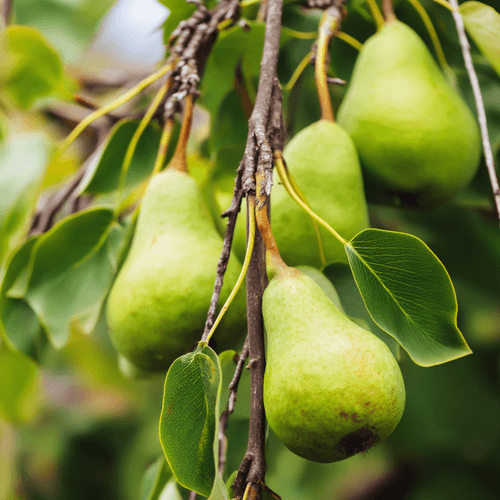Did you know ?
- 1 The pear is one of the few fruits that doesn't ripen on the tree.
- 2 Asian pears are actually apples in botanical terms.
- 3 Pears ripen from the inside out - unlike most fruits.

Pears are sweet, bell-shaped fruits with juicy white flesh and edible skin. They come in hundreds of varieties, offer excellent nutritional value, and have been cultivated for over 4,000 years.
Did you know ?
View other Pome fruits
Nutrition
| Calories | 101 kcal |
| Proteins | 1g |
| Carbohydrates | 27g |
| of which sugars | 17g |
| Fiber | 6g |
| Fats | 0.3g |
Ripeness
Selection
Storage and ripening
If you bought unripe pears, here's how to speed up the process :
Health
Origin
Pears originated in China and Central Asia over 4,000 years ago. They were cultivated by ancient Greeks and Romans, who developed many varieties. European settlers brought pears to America where they became an important crop. Today, China is the world's largest pear producer.
Recipes
Gallery
There is no images yet. Submit one now to contribute to the gallery !
F.A.Q
Warnings
Harder, more astringent, usually cooked before eating
Must be bletted (softened) before eating.
Firmer texture, rounder shape, more acidic flavor.